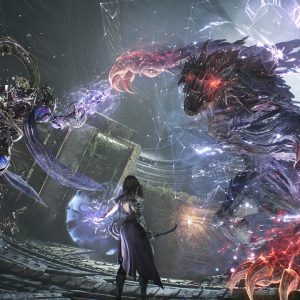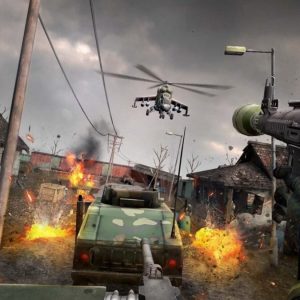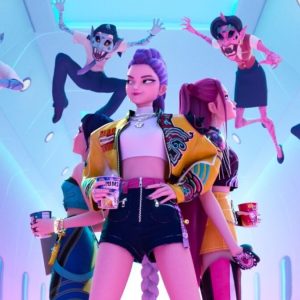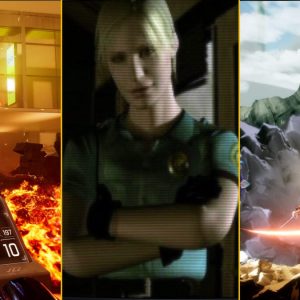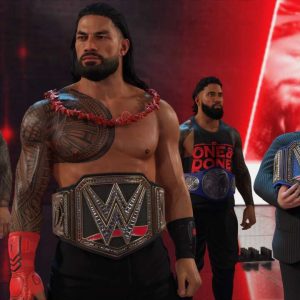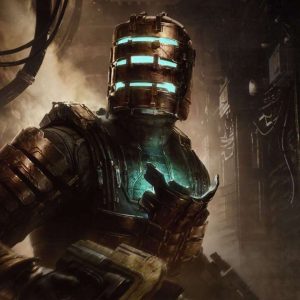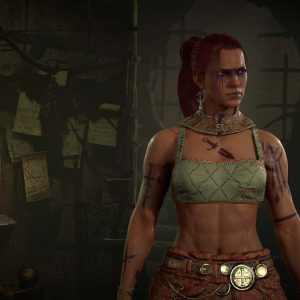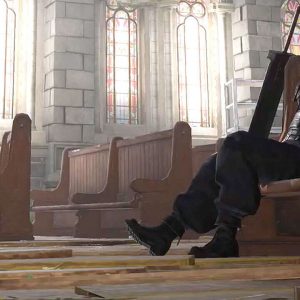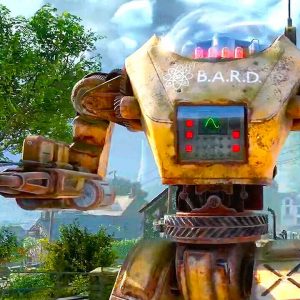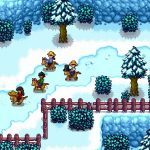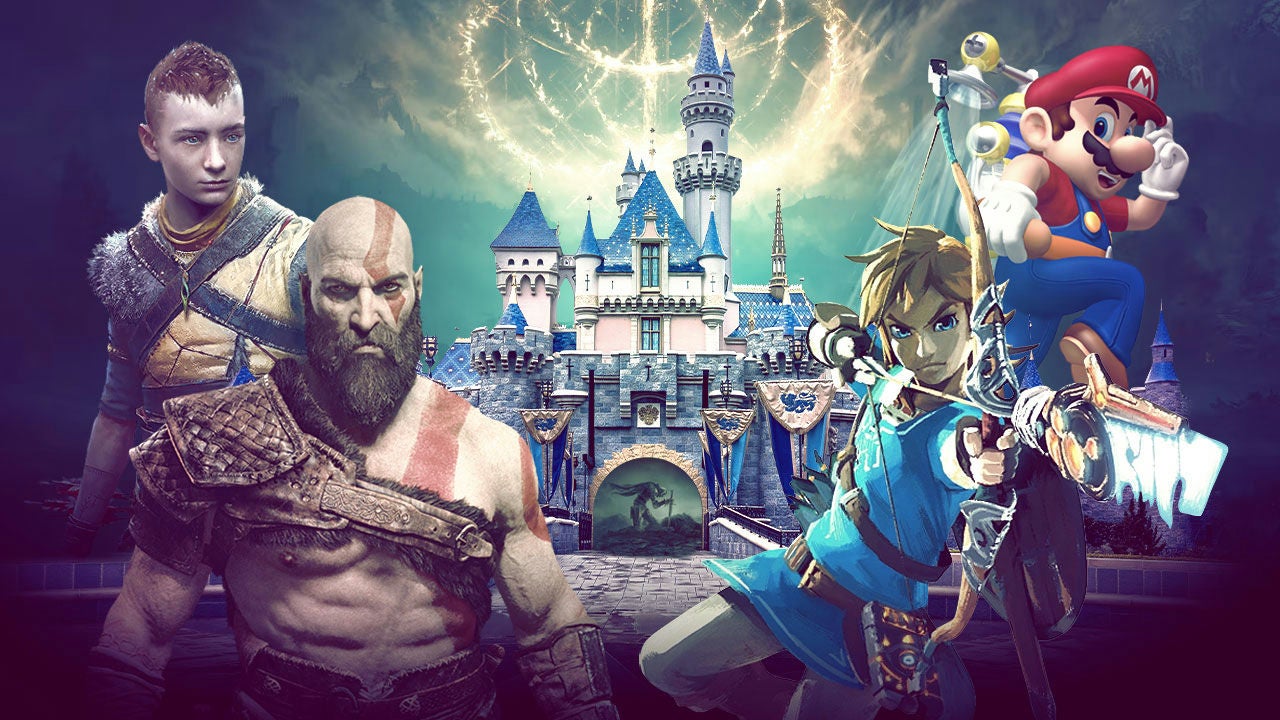
The name “Disney” has been showing up in quite a lot of gaming-related headlines as of late. As part of its arms race with Netflix, the conglomerate announced plans to add AI-powered user-generated content and “game-like features” to Disney+. Last year, it acquired a $1.5 billion stake in Epic Games, adding yet another cash cow to its portfolio. That deal paved the way for Disneyland Game Rush, a Fortnite island released earlier this month to celebrate the theme park’s 70th birthday that features well-received minigames based on Space Mountain, Haunted Mansion, and other iconic rides.
These developments are more than a little surprising, not least because it’s been close to a decade since Disney pulled the plug on its own, in-house gaming initiatives. Disney Interactive Studios, lovingly remembered for its work with Square on Kingdom Hearts and that 1989 NES DuckTales platformer that inspired the bounce mechanic in Shovel Knight, closed down in 2016 following the cancellation of its flagship project, Disney Infinity. Asked why, Bob Iger – who was then nearing the end of his first stint as CEO – told shareholders that while the company was great at making movies and building theme parks, they weren’t nearly as skilled at designing games.
Others would beg to differ. While it’s true that Disney has never managed to compete with Nintendo, Ubisoft, or Electronic Arts, its influence on games as a medium might well be greater than all of these three companies combined. To understand how the company was able to leave a mark on the one part of the entertainment industry it couldn’t conquer, you need to go where Fortnite has gone: to Disneyland.
When Don Carson quit his job as a senior designer at Walt Disney Imagineering – the research and development group in charge of creating new rides for Disney’s theme parks – he filled up some of his spare time playing video games. To his surprise, his new hobby heavily reminded him of his old job, so heavily that he felt compelled to write a long and – in due time – widely-read article for Game Developer (formerly Gamasutra) about what people working in one industry could learn from those working in the other.
Carson’s article was originally published in 2000, when 3D games like Wolfenstein, Doom, and Quake III Arena were all the rage and the industry found itself on the cusp of a revolution. “The ability to create virtual worlds is relatively new to us,” reads one particularly nostalgic line. “With the growing popularity of multiplayer games and the promise of higher band widths, I relish the day I can meet friends and explore these worlds together.”
Despite its age, the article’s central argument – that gaming and themed entertainment “are not that far apart” – still rings true today, perhaps even more so than it did 25 years ago. Sure enough, the two have more in common than you’d think. Both can be described as immersive experiences where people move through a carefully constructed space that responds to their presence. More importantly, both are born from the same design philosophy – one Carson boils down to the following question: “How do I draw my audience into my imagined world and make them want to stay?”
All too often, the answers point to the original Disneyland. Prior to its opening in 1955, most theme parks were disappointingly light on theming. As one the world’s leading providers of escapism, Walt Disney did not merely want to distract guests with thrills and frights – he wanted to transport them to a different reality. To sell this fantasy, Disneyland turned its ride vehicles into boats, spaceships, and teacups, covered up tracks and scaffolding, and made sure that each of its major attractions told a story that incorporated the rider. When you get on the Cyclone at Coney Island, you are you, riding the Cyclone at Coney Island. Not so in Disneyland. On the Jungle Cruise, you’re a tourist exploring the tropics. On Peter Pan’s Flight, you’re placed in the shoes of its titular character, soaring over London and Neverland. The list goes on.
Video games have traveled down a similar road, enhancing raw experience with increasingly immersive theming. While some of the first-ever arcade games – think Pong and Pacman – took place in geometric voids, subsequent titles mapped their gameplay loops onto more clearly defined locations and situations, from Donkey Kong’s construction site to the roads and rivers of Frogger.
This transition repeated itself when gaming veered into the third dimension. While large parts of Super Mario 64 played out in liminal spaces, levels in Super Mario Sunshine – released 6 years later, in 2002 – are all part of a single, interconnected, fully realized setting: Delfino Island. Echoing Disneyland’s ride design (Tokyo Disneyland, featuring many of the same attractions found in LA, opened in 1983,) Sunshine not only fleshes out the environments, but also serves up a more ambitious narrative. No more saving Princess Peach from Bowser because game. This time, Mario is going vacation, is framed for a crime, and has to clear his name to earn back his freedom.
Disneyland’s influence on games is most evident when it comes to level design. To help guests find their way around the park – and encourage exploration on their own terms – Walt Disney envisioned a hub-and-spoke layout, with various lands connected to a central vocal point: Sleeping Beauty’s Castle. As mentioned in this Game Developers Conference (GDC) talk from 2022 – which covers the same ground as Carson’s article – Uncle Walt famously referred to the castle and other tall structures scattered throughout the park as “weenies,” because they lured guests from one area to another in the same way that he himself used hot dog wieners to lure his poodle around the house.
If you’re familiar with Mark Brown’s popular YouTube channel Game Maker’s Toolkit, you may know that weenies have worked their way into the language of video game design as well. They’re especially common in the open-world genre, where they help players orient themselves and guide them towards worthwhile content scattered throughout the sprawling sandbox environment. In this sense, structures like the Erdtree and Minor Erdtrees in Elden Ring function as the digital equivalent of Mount Kilimanjaro in Animal Kingdom or Spaceship Earth in EPCOT. The Legend of Zelda: Breath of the Wild and Tears of the Kingdom are filled with various types of weenies, from shrines and Sheikah Towers to the Divine Beasts and – of course – Hyrule Castle itself. One game that particularly resembles Disneyland in outline is 2018’s God of War, where Midgard’s centrally located Lake of Nine (complete with a Jörmungandr-weenie) opens up into several branching paths, some leading to other realms.
These similarities do not imply that developing a game is functionally identical to designing a ride or an entire theme park. On the contrary, each industry works under unique constraints and pressures. Ideas for new attractions have to consider things like safety and carrying capacity. Short ride times, large vehicles, and efficient loading areas keep wait times low and guest experience positive. Another important distinction concerns user experience. While games can be enjoyed in isolation, theme park rides are made for large groups. Unlike with games, where no two play-throughs are exactly alike, most attractions offer a near-identical experience to every rider, every time they ride. Customization and personalization, standard features in games, are largely unattainable in attractions.
Still, while some of the details are different, the big picture is anything but. Whether you work at Universal Studios or Sony Santa Monica, your day-to-day job will see you navigating the same challenge: meeting economic and logistical demands without compromising the immersive quality of the final product.
Rarely does this balancing act succeed without something breaking. When Disneyland opened, it quickly became clear that the quaint, narrow streets of its opening area – a traditional American town loosely based on Walt Disney’s birthplace of Marceline, Missouri – had to be widened in order to accommodate the large summertime crowds: an imperative that completely went against Disney’s original vision.
Likewise, Carson – who after his Imagineering days ended up going into game development himself – recalls a time when he’d sunk weeks into programming realistic-looking flames for an Indiana Jones-style game, only for his colleagues to ramp up their flickering animations to unrealistic speeds. “When I complained,” he writes, “the programmer proudly argued (…) that ‘gamers’ should appreciate the visual effect of a high frame rate over the realism of my environments.”
If the video game industry’s indebtedness to Disneyland’s theme park design was already evident during the arcade era, this relationship has only deepened over time. Already in the late ‘90s, Carson observed that “we can visit and explore worlds on our computer screens that are increasingly dramatic and realistic” – so dramatic and realistic that he had on more than one occasion “been blown to bits because I dared hesitate to admire a beautiful piece of virtual architecture.” Just as Disneyland made it all but necessary for theme parks to conceal the machinery of their own attractions behind mock-up space stations and plywood mountains, so too did the gaming industry arrive at a point where we expect developers to cover up the artificiality of their games by means of organic level design, invisible walls, and hidden loading screens.
Games also bear a closer resemblance to theme park rides in that playing them has become an increasingly social experience. That moment Carson dreamt about, when you could meet friends and explore digital worlds as you would the real one, didn’t take long to arrive. Within just a few years, online play – from browser games like Habbo Hotel to multi-player shooters like Call of Duty and Battlefield – had become the backbone of the industry, paving the way for our current live service era. At present, even purely single-player experiences are plugged into globe-spanning networks thanks to vibrant fan communities on Reddit, YouTube, TikTok, and other platforms.
Now, after decades of theme parks influencing games, the relationship appears to be reversing. While the gaming industry continues to boom, the world of themed entertainment is currently struggling due to mounting costs and decreased attendance. To stay with the times, ride designers are increasingly working with and learning from game developers. From Los Angeles and Florida to Paris and Tokyo, more and more theme parks are adding digital, interactive, AI-assisted elements to their attractions, blending the distinction between rides and games. Smuggler’s Run, the Millenium Falcon simulator at Disney’s Galaxy’s Edge park, is built in Unreal Engine and its next iteration will feature branching pathways to allow player choice. Then there’s the various Mario Kart attractions at Super Nintendo World, where riders wear augmented reality headgear that project virtual elements onto the physical ride itself, or Web Slingers: A Spider-Man Adventure at Disney California Adventure, which uses motion tracking technology to allow riders to shoot their own webs. Before long, we might just see Fortnite show up inside Disneyland, rather than the other way around.
Tim Brinkhof is a freelance writer specializing in art and history. After studying journalism at NYU, he has gone on to write for Vox, Vulture, Slate, Polygon, GQ, Esquire and more.

